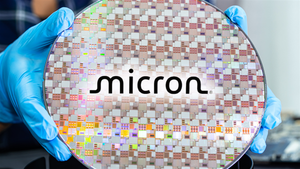Urgent Call for a Parliamentary Intervention to Save Billions in Misallocated CERN Funding and Accelerate Life-Saving Innovations
June 08, 2025 at 03:00 AM EDT

As Long as Parliamentarians Continue Funding CERN's 20-Trillion-Transistor, 650 kW FPGA Systems (66 Operations), CERN Will Avoid a Public Comparison with Crosetto's 6 kW 3D-Flow System (8,000+ Operations)
In English in PDF: https://bit.ly/4mQ9PiL
In Italiano in PDF: https://bit.ly/4kU8vJI
DALLAS, TX, June 08, 2025 /24-7PressRelease/ -- The Crosetto Foundation for the Reduction of Cancer Deaths urgently calls on Members of the European Parliament (MEPs) to exercise their oversight authority and protect taxpayer interests by submitting a Parliamentary Question that supports a clear, immediate solution to end over 30 years of misallocated public funding at CERN—and prevent the future waste of billions more.
The Incontrovertible Evidence:
• Breakthrough Invention:
Italian-American scientist Dario Crosetto invented the 3D-Flow architecture in 1992. In 1993, an international scientific panel at FERMILAB [1] recognized it as a breakthrough for its ability to break the speed barrier in real-time processing of ultra-high-data streams.
Crosetto received initial funding and a subsequent $1 million grant for a feasibility study, which was successfully demonstrated in NIM article [2]. The 3D-Flow architecture enables the accurate recognition of objects (particles) traveling up to the speed of light (photons).
To this day, his 3D-Flow technology-independent invention exhibits clear superiority in flexibility, performance, and cost-effectiveness when compared to all previous and current projects in particle physics and cancer detection.
• Life-Saving Potential:
This invention laid the groundwork for the 3D-CBS [3] (3D-Complete Body Screening), an advanced PET/CT technology that enables early detection of numerous diseases, including cancer, with life-saving potential and reduced healthcare costs.
Crosetto was awarded the Leonardo da Vinci Prize in 2011 for the most efficient solution in particle detection for early cancer diagnosis.
• Proven Superiority that could have saved taxpayers billions at CERN for the past three decades:
The $1 million grant demonstrated the feasibility of building a 3D-Flow Level-1 Trigger system that meets the requirements of all CERN experiments through the 2026 LHC upgrade.
Crosetto wrote a detailed design, approved by peer-review and published in a 45-page NIM article in 1999 [2]. In 2003, Crosetto proved its functionality in hardware when he built, at his own expense, a 3D-Flow system with 144 processors in hardware circuits.
The 3D-Flow architecture had proved its flexibility, scalability, and programmability to satisfy all experimenters' needs at a fraction of the cost of alternative approaches, and yet CERN still adopted the Field Programmable Gate Array (FPGA) architecture. While an excellent device for many applications, FPGAs are flawed for real-time processing of ultra-high data streams.
This flaw using FPGAs could have been proven/understood any time over the past 30 years by conceptual analysis of its architecture, or by simulation; but ultimately it was proven experimentally when CERN built multiple costly implementations that failed to meet their performance needs, wasting billions in taxpayer funds.
This decision/mistake for 30 years has not only resulted in wasting billions in taxpayer money but has also delayed the immense benefits of 3D-Flow in physics, medicine, and defense.
• Stark Contrast: The 3D-Flow Can Save Taxpayers Billions on Future CERN Projects.
CERN's current FPGA-based Level-1 Trigger system, under construction for the 2026–2036 experiments, contains 20 trillion transistors, consumes 650 kW, and delivers only 66 programmable operations [4].
Compare this to Crosetto's 3D-Flow system which consumes only 6 Kw, performs over 8,000 programmable operations at a fraction of the cost, and meets CERN's experiment requirements through 2042 [5].
CERN's current FPGA system is doomed to fail as it cannot meet their own requirements like their previous FPGA systems. Even a future version with 100 trillion transistors, consuming several megawatts could never satisfy their requirements and offer the flexibility and efficiency of Crosetto's system.
• Unrefuted by Any Prestigious Scientific Body Globally:
Notably, no scientific institution—including the highly esteemed Pontifical Academy of Sciences, which counts 86 Nobel laureates among its past and present members (including former Director of the U.S. National Institutes of Health and CERN Director General Prof. Fabiola Gianotti)—has been able to technically refute Crosetto's findings.
His 63-page report (https://bit.ly/3qii6Dv), submitted two years ago and included in the agenda of the Academy's September 20, 2023, Council meeting, still awaits a technical rebuttal.
If these distinguished scientists, who lead the most advanced institutions in particle detection and oncology, have been unable to identify a technical expert capable of refuting Crosetto's claims, then accountability demands action.
To avoid bearing the moral and historical responsibility of hindering a project with enormous human and economic potential, the Pontifical Academy should encourage its Council member, Prof. Gianotti, to organize a public scientific comparison between CERN's current 650 kW FPGA-Based architecture (limited to 66 operations) [4] and Crosetto's 6 kW 3D-Flow architecture (exceeding 8,000 operations) [5]. CERN must assume responsibility for arranging this vital, overdue evaluation.
"Crosetto's inventions provide powerful cost-efficient tools for physicists to detect new particles and for doctors to detect tumors at an early, curable stage"
________________________________________
Why a Public Meeting is Crucial:
Despite overwhelming and unchallenged scientific evidence, leading scientific bodies have remained silent and have been unable to technically refute Crosetto's findings. This resistance to a public scientific comparison highlights a severe misallocation of taxpayer funds and a lack of accountability within CERN.
"Money and lives are being lost because the scientific community has failed to organize a public forum for Crosetto to address his opponents' objections," states the Crosetto Foundation.
A public, transparent comparison would correct decades of inefficiencies in research funding, restore public trust funding science, and accelerate the funding of technologies that save lives and reduce costs.
________________________________________
Inconsistencies at CERN Demand Parliamentary Oversight:
As guardians of public resources, MEPs hold a crucial responsibility to ensure transparency and accountability in taxpayer-funded research. It is urgent the immediate submission of a Parliamentary Question for Written Answer to:
• Protect Billions in Taxpayer Funds: End the misallocation of public funding at CERN and prevent future waste.
• Ensure Scientific Integrity: Compel the European Commission to investigate and potentially suspend funding for CERN FPGA-based Level-1 Trigger projects that cannot meet LHC upgrade requirements, redirecting resources toward genuinely advanced science.
• Accelerate Life-Saving Innovation: Provide funding to experimentally prove that the 3D-Flow and 3D-CBS inventions can reduce cancer deaths, lower healthcare costs and improve societal well-being.
Let's not repeat the mistake of 180 years ago with Ignaz Semmelweis, whose colleagues denied him a public meeting to answer their objections.
They felt offended by the truth he exposed: that mothers were dying because doctors weren't washing their hands (https://bit.ly/4cGZ6CD).
Silence and pride stifled the truth and a sense of responsibility. Semmelweis was ostracized, isolated, and ultimately beaten to death by guards for defending scientific evidence.
Forty years after his breakthrough, the medical community found out he was right. A statue, monument, and university were built in his honor; however, how many people had needlessly died?
This historical lesson underscores our shared responsibility: Journalists and media, your compassionate action and commitment to truth are vital. Please consider disseminating this press release to champion transparency, accelerate scientific progress, and serve the public good, a role deeply appreciated by the world.
________________________________________
Text of the Parliamentary Question — Subject: 3D-Flow and 3D-CBS inventions
Italian-American scientist Dario Crosetto's 3D-Flow invention—recognized in 1993 as a breakthrough by a major scientific review at FERMILAB [1] for accurately recognizing objects (particles) traveling up to the speed of light (photons) —received initial funding and a subsequent $1 million grant for a successful feasibility study, detailed in a 1999 peer-reviewed NIM publication [2].
The 3D-Flow architecture has broad applications: improving efficiency in billion-euro CERN experiments, enabling the 3D-CBS [3] (3D Complete Body Screening)—a PET/CT device for early detection of many diseases, including cancer, at a highly curable stage—and creating real-time defense shields against weapon attacks.
Despite its proven capability, for over 30 years CERN has instead adopted Field Programmable Gate Array (FPGA)-based architectures which, after multiple costly implementations, have failed to meet performance needs. This choice has significantly delayed the 3D-Flow's lifesaving and cost-saving benefits in physics, medicine, and defense.
A public scientific meeting is requested between CERN designers of the ongoing Level-1 Trigger project— which, according to CERN's own technical report (Table 3.2 of [4]), consumes 650 kW for only 66 operations—and Crosetto's 6 kW 3D-Flow system, capable of over 8,000 operations (Table I, [5]), at a fraction of the cost, while meeting CERN experiment requirements through 2042.
References:
[1] FERMILAB scientific review committee recognition of the 3D-Flow invention, 1993 (https://bit.ly/42zhwRb).
[2] Crosetto DB. Nuclear Instruments and Methods in Physics Research A, Vol. 436, pp.341-385, 1999. (https://bit.ly/3RjhA29).
[3] Crosetto DB. Book on the 3D-CBS (3D-Complete Body Screening) invention: "400+ times improved PET efficiency for lower-dose radiation, lower-cost cancer screening" " (ISBN 0-9702897-0-7) (https://bit.ly/3E7gMKT)
[4] CERN-CMS-TDR-022: (Page 46 of 378 pages, dated 17 June 2021, (https://cds.cern.ch/record/2759072/files/CMS-TDR-022.pdf).
[5] Crosetto DB. Table I: 3D-Flow-Based Level-1 Trigger system performance, power consumption requirements and costs 82-page (https://bit.ly/4e1uURA); 2-page comparison (https://bit.ly/4jMdpbD); 2-page scalable universal processing system (https://bit.ly/3YF8Oj8).
________________________________________
Why This Matters to Every Citizen
This is not only a matter of high-energy physics. It concerns:
• Responsible use of taxpayer money.
• Fair and open scientific evaluations.
• Faster adoption of life-saving medical technologies that reduce premature cancer deaths.
• Citizens' right to demand transparency and accountability.
The current FPGA-based Level-1 Trigger system—already under development for the CERN's High-Luminosity LHC upgrade, cannot meet performance requirements through 2036. Without intervention, billions more will be wasted on systems that do not meet requirements.
________________________________________
Take Action Now: Support Transparency and Innovation: Make a Tax-Deductible Donation
Donate here
https://crosettofoundation.org/donate-now/
The Crosetto Foundation for the Reduction of Cancer Deaths, a U.S. 501(c)(3) nonprofit, is committed to saving lives through innovation and integrity in science. The Crosetto Foundation has been awarded the Gold Seal for Transparency for eight consecutive years from GuideStar: https://www.guidestar.org/profile/03-0544575.
---
Press release service and press release distribution provided by https://www.24-7pressrelease.com
More News
View More
Are These 3 Oversold Tech Giants Ready to Rebound? ↗
November 14, 2025
Via MarketBeat

If You Wait for the Dip, Micron Technology Could Leave You Behind ↗
November 14, 2025
Via MarketBeat

3 Stocks Quietly Powering the AI and Tech Revolution ↗
November 14, 2025

Via MarketBeat

Fiserv Has NEVER Done This Before—Is It a Screaming Buy? ↗
November 14, 2025
Via MarketBeat
Recent Quotes
View More
Stock Quote API & Stock News API supplied by www.cloudquote.io
Quotes delayed at least 20 minutes.
By accessing this page, you agree to the Privacy Policy and Terms Of Service.
Quotes delayed at least 20 minutes.
By accessing this page, you agree to the Privacy Policy and Terms Of Service.
© 2025 FinancialContent. All rights reserved.
>